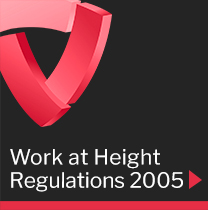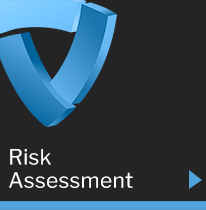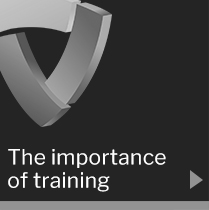Saving lives by stopping falls
The Work at Height Regulations 2005
Working at height in the UK workplace is regulated by the Health and Safety Executive’s (HSE’s) Work at Height Regulations 2005 as amended by the Work at Height (Amendment) Regulations 2007. The Regulations apply to all work at height where there is a risk of a fall liable to cause personal injury. They are designed to prevent the deaths and injuries caused each year by falls at work.
A place is ‘at height’ if (unless the Regulations are followed) a person could be injured falling from it, even if it is at or below ground level.
Do the rules apply to you?
Yes. The Regulations apply to all work at height where there is a risk of a fall from height liable to cause personal injury. They place duties on employers, the self-employed, and any person who controls the work of others.
You must do all that is reasonably practical to prevent anyone falling and the Regulations set out a simple hierarchy for managing and selecting equipment for work at height. Dutyholders must:
- Avoid work at height where they can;
- Use work equipment or other measures to prevent falls where they cannot avoid working at height;
- Where they cannot eliminate the risk of a fall, use work equipment or other measures to minimise the distance and consequences of a fall should one occur.
Planning and supervision
- All work at height must be risk assessed, properly planned and organised;
- It must take account of weather conditions that could endanger safety;
- Those involved must be properly trained and competent;
- The place where work at height is carried out must be safe;
- Equipment used for work at height must be appropriately inspected;
- The risks posed by fragile surfaces must be properly controlled;
- The risks from falling objects must also be properly controlled.
Falling objects
Where it is necessary to prevent injury, you must do all that is reasonably practicable to prevent anything falling. If it is not reasonably practical, you must ensure that no one is injured by anything falling.
You must ensure that nothing is:
- Thrown or tipped from height if it is likely to injure anyone;
- Stored in such a way that its movement is likely to injure anyone.
If the workplace contains an area in which there is a risk of someone being struck by a falling object or person, you must ensure that the area is clearly indicated and that (as far as reasonably practicable) unauthorised people are unable to reach it.
For more information about the Work at Height Regulations and their practical application in the workplace please click here.
Acknowledgements:
Work at Height Regulations 2005 l Health and Safety Executive (HSE)
www.hse.gov.uk l Health and Safety Executive (HSE)
Access Industry Forum (AIF)





